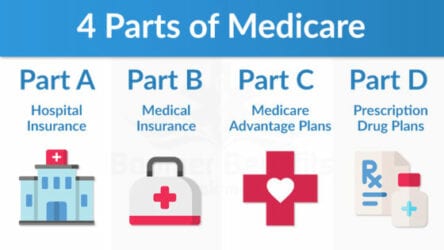Are Medicare Advantage Plans Worth The Risk?
 Now is the time to start thinking about your insurance plan before the enrollment period. If you are considering Medicare Advantage for your healthcare needs, ask yourself one simple question. Is Medicare Advantage worth the risk?
Now is the time to start thinking about your insurance plan before the enrollment period. If you are considering Medicare Advantage for your healthcare needs, ask yourself one simple question. Is Medicare Advantage worth the risk?
Medicare Advantage plans have become an alternative option to traditional Medicare. The additional coverage for dental and vision may seem attractive at first, but the core benefits aren’t as stable and strong as traditional Medicare.
Before you enroll, research how the plan affects your current health care situation. Ask yourself what does it cover, who can I see, and where can I be seen.
Medicare Advantage Plans

Medicare Advantage, also known as Medicare Part C, replaces Medicare Part A and Part B. It provides all the benefits of Medicare Part A and Part B and most plans include Part D drug coverage, however, the plans limit the coverage options.
Medicare Advantage and traditional Medicare operate very differently. The average Medicare beneficiary has access to 28 Medicare Advantage plans with varying options for coverage, network, co-insurance, deductibles and copays. It can be very confusing to navigate the best plan for you.
- They are similar to employer-provided group health insurance in that you typically must choose a health care provider in the insurance company’s network.
- The network may be small for a health maintenance organization (HMO) or somewhat broader for a preferred provider organization (PPO).
- You may need pre-approval for certain types of care or referrals for specialists.
- If you are out of network, your costs may not be covered or may not apply to your out-of-pocket limits.
- Your physician can become “out of network” without much notice.
- These plans are typically regional and you may not have coverage if you travel out of state.
- You may no longer qualify for supplemental policies such as Medigap or may be faced with high premiums when switching back to traditional Medicare from Medicare Advantage plans.
- You may find that Medicare Advantage plans have more out of pocket expenses from higher copays and other healthcare related costs.
Overall, Medicare Advantage plans may end up costing more in the long run (especially if you need regular medical care) by limiting your coverage options for physicians, facilities, hospital care and outpatient care.
Traditional Medicare

On the contrary, the tried and true traditional Medicare option delivers a stable, continuity of care. The three Medicare components are:
- Part A covers hospitalization and is typically premium-free.
- Part B covers outpatient care, including doctor visits, and has a standard monthly premium of $144.60 with a sliding scale based on income.
- Part D covers prescription drugs provided by private insurers. Your out of pocket costs vary widely as well as the monthly premiums averaging $32.74.
With traditional Medicare, you can choose any physician who accepts it (most do) and the government pays the health care providers directly. You are also responsible for any deductibles, copays and coinsurance.
Private insurers also offer supplemental plans known as Medigap to cover the difference. The average premium for Medigap in 2019 was $152/mo. However, there are factors that effect your monthly premium cost including your plan, your insurer, and where you live. These plans are labeled by letters A through N.
When you apply for a Medigap policy when you are first eligible for Medicare, the insurer must accept you and cannot charge more for preexisting conditions.
Overall, traditional Medicare provides seniors with piece of mind. No need to worry about networks, surprise out of pocket expenses, and you have control over what physician you want to see and when. For more information on Medicare, please visit www.medicare.gov for information and enrollment.
Call (727) 581-8706 to learn about the Insurance Plans the providers at The Eye Institute of West Florida accept
Reference: Washington Post article

